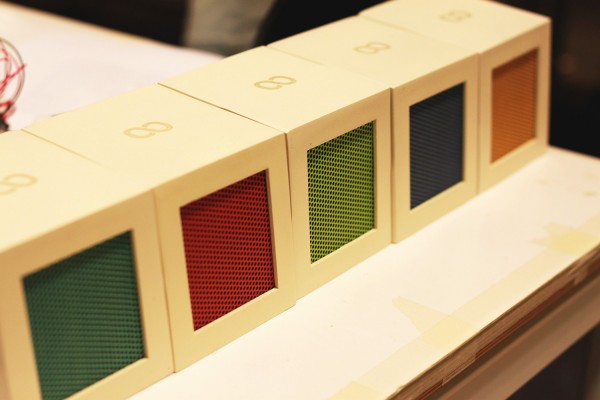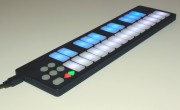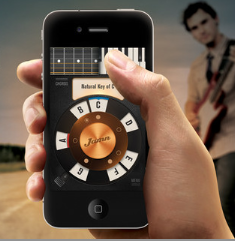Anyone here remember personal stereos? Those large pieces of self-contained wiring and hardware that allowed people to jam out to music on their front stoops, at the park, in the school yard or basically anywhere else that wasn’t near an electrical outlet? The possibilities were endless!
Fast forward a few decades and we’ve left the often shoulder-slung box in the dust, replaced with music players that fit in the pockets of most jeans. Even when people do find themselves in someone’s home at a party and near plenty of electricity, all it takes in an mp3 player and a dock connected to a speaker and music is good to go. Nary a vibrant NYC party that sees the host/ess thumbing through CDs in a tower for some good tunes to set the mood. Playlists and streaming seem to uncontestedly rule the day with their combined small, quick, and easy hookup.
What if there were a way to combine the discovery and variety capabilities of music streaming with the whole and physical use of a music box?
Enter the Skube.
Denmark’s Copenhagen Institute of Interaction and Design is the academic home to a group of four creative individuals who have merged playback concepts of old with that of new. Students Andrew Spitz, Martin Malthe Borch, Andrew Nip and Ruben van der Vleuten worked together to create a music box that uses the powers of Last.fm and Spotify to provide songs in a jukebox-like fashion.
Here is a succinct list of Skube’s key features:
1. Playlist and Discovery: Two modes of use
(As reported on geek.com, for the Discovery feature, Skube pulls songs from the web by “tapping into the Last.fm API. To actually stream said tracks, though, it connects to Spotify.”)
2. Interconnecting capability. Many Skubes can be placed together and fully utilize all the available speakers (and accompanying playlists of each individual Skube!) enhancing the listening experience and greatly widening variety. No more changing out iPods if your friend has a song that you don’t!
3. Skube promotes object interaction beyond pressing a play button. More than reintroducing a physical object into the room, to operate the box, users have to use a combination of rotating and tapping of Skube to navigate its functions.
Flip Skube upside down: Discovery mode
Tapping Skube: Play and Track skip
Turn Skube on its front: OFF
4. Easy (and legal!) Sharing. If one hears a song they like from another Skube while they are connected, one tap of the heart button on the back of your own Skube will add it to your Last.fm library.
For a device so clean and simplistic in design, lots of complex tech goes into making it ‘just work well.’
Skube uses the Arduino prototyping platform – single board computer, an XBee wireless adapter and flexible media creation space, Max/MSP.
Skube is a fully functional tool but has yet to reach commercial sale. The gentlemen of Copenhagen see Kickstarter and crowd sourcing as a possible route but nothing official is launched yet. If this does come to need backers though, Skube might just be the thing that pushes me into a better relationship with Spotify.
Below are two videos that demonstrate Skube in action and explain its construction respectively.
Skube – A Last.fm & Spotify Radio from Andrew Nip on Vimeo.
Inside the Skube from Andrew Nip on Vimeo.
Kira is an old school music nerd with a love for all things creative; always searching for music’s common ground. She graduated with an M.A. in Performing Arts Administration from New York University. Drop her a tweet @shadowmelody1

















Comments are closed.